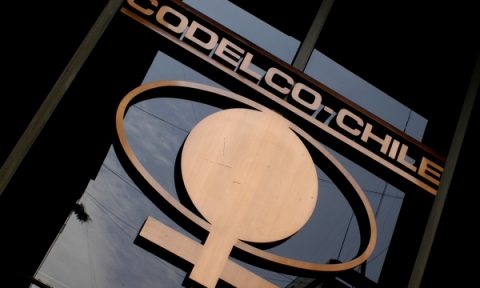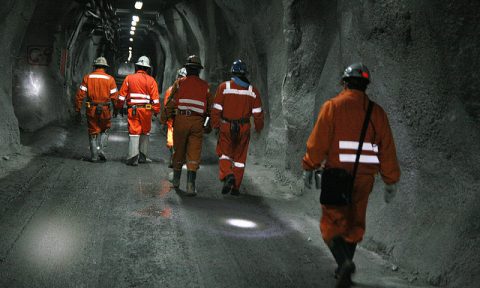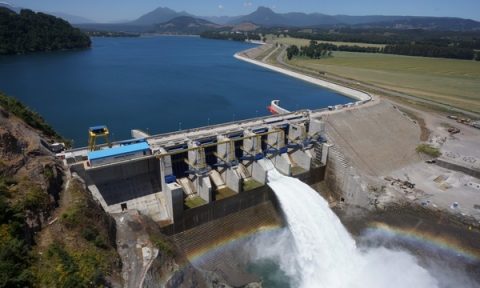Strong demand for copper cathode fall promises to drop the metal floor
Analysts say that despite the economic slowdown in China’s copper ballast shortage has increased the demand for cathodes in that country, providing a solid support to copper prices at $ 3 and not ruled by a rebound in the second half
The fear that gripped financial markets in the last couple of months, has caused the price of copper is dangerously close to the level of U.S. $ 3 a pound and threatens to fall from it. However, until now not has drilled it, and partly that is attributed to a decrease of external nervousness, but also to a fundamental factor that would be doing of support: a high demand by copper cathodes.
The quote of copper closed on Friday at U.S. $ 3.14 per pound, the highest in three weeks, in response to the words of Ben Bernanke, the chairman of the U.S. Federal Reserve (Fed) on Wednesday. He indicated that the quantitative relaxation program will remain unchanged for now, in circumstances that in both May and June said that such policy would stop as soon as the U.S. unemployment reached 7%.
The quantitative relaxation is to inject liquidity into financial market by way of Fed purchases of government bonds, forcing down market interest rates. Of this policy, agents fear, deprive of funds to a number of asset classes, among them commodities like copper.
Ensuring a Level
Amid this stage and despite the volatility and fears of a slowdown in the Chinese economy-the main consumer of copper in the world, several specialists have begun to emphasize in their analysis the need of copper cathodes which exhibits the market, the use of which has intensified in China and USA.
“The current copper price level seems to have a pretty solid floor,” said a report from Aurubis, one of the leading world producers of cathode in Hamburg.
The analysis is based on a financial aspect and on a real one. The first one is related to a significant reduction in short positions against the copper, in the New York Stock Exchange (Comex).
The second reason relates to “have also increased the awards they traded copper cathodes,” says Aurubis.
The copper cathodes award is what is paid to smelters for its refinement of copper ore.
In China, these awards are now at U.S. $ 180 per ton, after reaching U.S. $ 60 in March. The awards have also come up in the U.S. where you pay per ton to U.S. $ 154 from U.S. $ 110 in April.
The demand for cathodes behind these values, makes that Colin Fenton, chief economist at JP Morgan commodity, predict that the price of copper can be returned to a level of U.S. $ 3.45 at year end. This implies an increase of around 10% in the second half.
“Our discussions with copper market participants in Asia and the U.S., as well as our own analysis, suggest that a remarkable point is the demand for copper cathodes,” he argues.
If it is true, only extreme slowing growth of the Chinese economy, a hard landing-would justify the lower copper price of U.S. $ 3 per pound.
Ballast Shortage
“One of the most notable trends-and less-discussed in the forward market has been the resurgence of Chinese copper demand, even as the projections of real GDP expansion delimit” says Fenton.
But “most market participants expect now appears upside surprises risk as to the use of refined copper in 2013, and no further deterioration on. We also have greater conviction now, after a tour to Asia, in our projection that the use of refined copper in China will increase 6.2% in 2013, “he says.
This increase is important because China is responsible for 40% of global copper demand. Given the relative size, is also a relief for the current quote an expectation of greater use, because the overall market showed a downturn of 5.3% in 12 months in the use of refined copper in the first quarter, according to figures recently released by the International Copper Study (ICSG, as its English name), based in Lisboa. In January-March 2012 it was 5.246 million tons and in the first quarter of this year 4.966 million.
“In the short term, the main driver of the increasing demand for cathodes is the poor availability of copper ballast,” explains Fenton. “The main cause is a lack of ballast,” agrees Aurubis analysis.
This shortage “not only leads to lower production in Chinese copper smelters, but also creates bottlenecks including commodity processors: the latter in particular has a combination of inputs of copper cathodes and sinker” says Aurubis .
Thus, if the supply of ballast copper is insufficient, demand for cathode grows so as to avoid production losses.
In fact, recently the major copper smelters in China, Jiangxi and Yunnan giants have already announced they will have to slow or stop production due to lack of ballast.
The line follows the analysis of Fenton: “Intensive ballast manufacturers that can change very quickly cathode ballast on the basis of changes in their relative prices, are a key pillar cathodes demand and market prices current “poses. “What intensifies this effect, is that most companies have little or no inventory cathode, so they have to sue in the market.”complements the Aurubis report. Then, it happens that “this demand is confronted with reduced availability” of the resource, adds Aurubis.
The availability of cathodes is still insufficient even outside China. For example, since March Indian Sterlite smelter, which produces about 30,000 tons of refined copper per month, has been out of service.
“If you add volume loss in casting Garfield, Utah, in the U.S., due to a collapse in a mine [Rio Tinto], and scheduled maintenance phases in functions of the world, the situation seems to point to a market where price momentum could come from the insufficient availability of cathodes “concludes Aurubis.
Source: La Tercera












